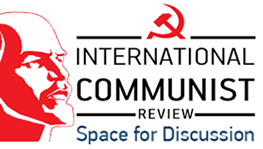1. The Great October was a socialist revolution.
The contradictions of capitalism cannot be resolved within the framework of capitalism, capitalism must be replaced by a socialist society. The path to this is the socialist revolution. The Great October opened the epoch of revolutions.
This great epoch is still not over. There were and there will be successes and failures, the times of revolutionary recession and periods of revolutionary upsurgeare following each other, but this process ultimately leads to the victory of socialism on a world scale. Now we witness bigger and bigger wealth concentrating in the hands of fewer and fewer people, growing poverty for more and more people, growing population and more and more deteriorating natural environment, increasingly destructive military technologies concentrating in the hands of fewer and fewer, better and better technical opportunities and weakening democracy – those are contradictions, which cannot be resolved by capitalism.
2. The Great October was the revolution of the working class.
1917 was not a coup d'etat of a small revolutionary group, but it was a social revolution. A historical deed of the working class, the only class interested in the consequent fight against capital. It proved the words of the Communist Manifesto:
"Of all the classes that stand face to face with the bourgeoisie today, the proletariat alone is a really revolutionary class. The other classes decay and finally disappear in the face of Modern Industry; the proletariat is its special and essential product.” [1]
The position of the working class has changed a lot in the recent decades. The internationalization of capital and capitalist competition lend impetus to the concentration and centralization of capital and this development leads to changes in the social structure, while the strengthening of the monopolies sharpens the problems, exerts pressure on and destroys a section of the middle strata. Still the working class in the broad sense of the word - the social class which owns no capital and must sell its own labour power - today too is the most conscious force in the fight against the capital.
3. The communists were those who prepared, organised and carried out the first socialist revolution of the world
The Great October proved that among the various currents in the labour movement only the revolutionary, radical line, the communists assume the responsibility and are able to carry out a socialist revolution, only Marxism-Leninism is a reliable ideological weapon.
In the epoch of socialist revolutions the communist and social democratic currents completely and finally broke up. Communists became the carriers of socialist revolutions, while social democracy irrevocably committed themselves to capitalism.
4. Working masses cannot win and keep the power without a disciplined, organised, built on the principles of democratic centralism Marxist-Leninist party
Against the will of the masses – no matter how organised a small revolutionary group is – no victorious revolution is possible. But no matter how much the people wish for a revolutionary change, it's not possible without an organised and disciplined party.
5. The prerequisite of the party’s success is the adherence to Marxism-Leninism.
The basis of the communist party’s strength is its ideological purity and the unity of policy and action. While the basis of the party’s ideological purity is the acceptance and creative application of Marxism-Leninism.
6. Proletarian internationalism and the international unity of the communist parties are important prerequisites of the success of the revolutionary struggle.
Shortly after the victory of the Great October, in the March of 1918 the 3rd Internationale started its work, the 3rd Internationale was so far the biggest institutionalized cooperation in the history of the communist movement.
The importance of proletarian internationalism is not decreasing. Only together communist and workers’ parties can defeat the forces of capitalism.
7. Socialism should oppose the forces of capitalism with a compelling power. Peaceful co-existence does not mean reconciliation with capitalism but is one of the forms of struggle.
Capital has never forgiven the revolution of 1917. From the first moment it tried to get revenge, to get back its lost positions. We Hungarians remember well, that in 1919 the Soviet Republic was drown in blood and Miklós Horthy was put into power for more than two decades. In order to eliminate the Soviet Union and communists, the capital unleashed fascism on the world. Without the support and the money of the European big capital there would have never been any Hitler or Mussolini. Capital didn’t care that fascism caused wars and the death of tens of millions. Capital still hasn’t completely lock back the spirit of fascism into the bottle, but takes it out every time it’s needed. Capital started the cold war (1948-1990) in the name of revenge, and toppled socialist systems in several countries in the 1990’s. In this specific period there was at the same time an opportunist corrosion of the CPs and violations of the laws of socialist construction, which formed conditions for the counterrevolution. A milestone in this course were the decisions of the 20th Congress of the CPSU.
